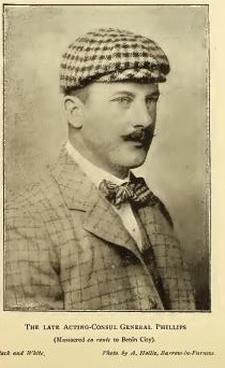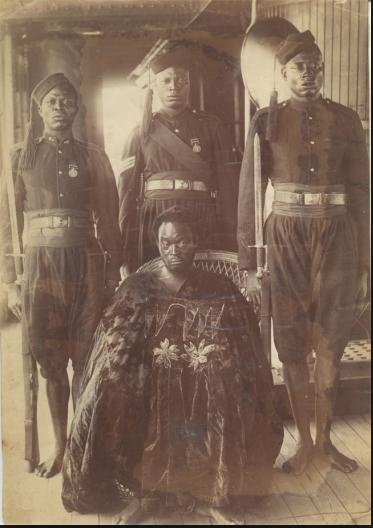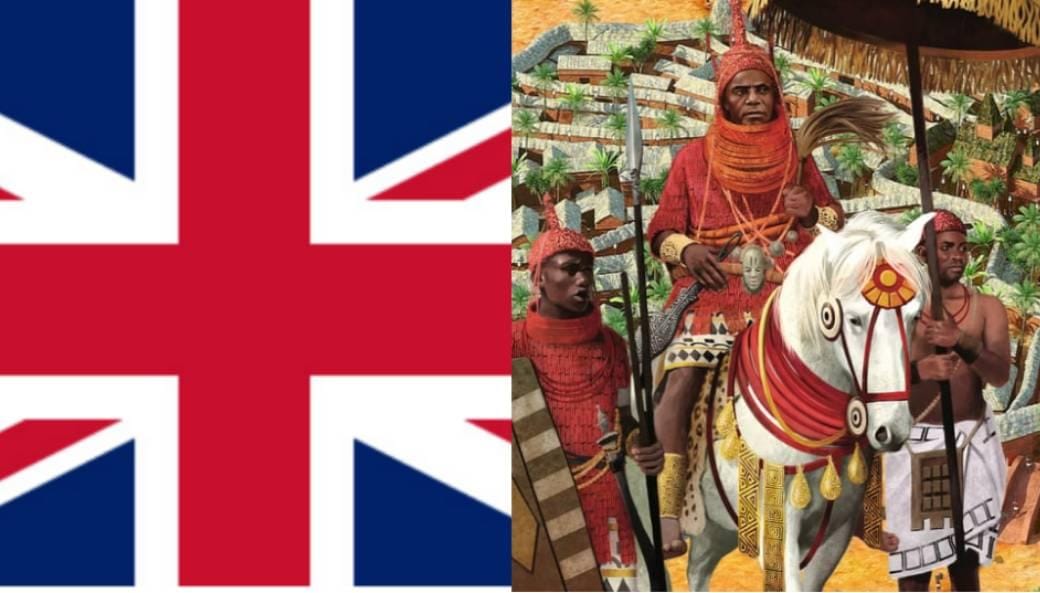In the beginning of 1897, the Benin kingdom was an obscure and relatively unexplored part of the interior of the Niger Coast Protectorate. It constituted an area of approximately 4,000 square miles not yet under the sway of either direct British administration or trade, but claimed by the British as part of their sphere of influence following the Berlin West Africa conference of 1885. To strengthen the claim the British signed a treaty with the king in 1892.
Had it not been for the activities of a rather obscure young career officer, son of an Anglican clergyman and graduate of Cambridge named James R. Phillips, the Protectorate might have remained unknown to the
British public. But Phillips who had gone on a hastily prepared and ill-thought-out expedition to the city met his death at the hands of Oba Ovoramwen Nogbaisi, which occasioned a massive retaliatory effort against King Overami thereby resulting in his exile and the establishment of British rule. The British also removed the bronzes and destroyed the famous Great walls of Benin City for which the city is now famous.
Constructed over a period of 600 years, the Great Walls of Benin or the (Iya) was located at the southern border of the defunct Benin Kingdom, which was one of the oldest and most highly developed states in West Africa. For the over 400 years the Walls existed, they protected the inhabitants of the kingdom, particularly, the traditions and civilisations of the Edo people.
Read Also: How Britain Funded Gowon To Violate The Geneva Conventions
The walls, which are four times longer than the Great Wall of China, are a combination of strong materials like ramparts and moats, which predated the use of modern earth-moving equipment and technology, and were used for defensive purposes. Construction work on the wall began around 800 AD and ended mid-1400.
Archaeologists say it took an estimated 150 million hours of digging by local people to construct the wall and the structure is considered as the largest single archaeological phenomenon on earth. The Great Walls of Benin were estimated to extend for about 16,000 km in length; both the exterior and interior walls. They occupied a landmass of 6,500 km2, which is about 37 per cent of the present landmass of Edo State. The walls were lost when the city was looted, blown up and razed to the ground by British troops.
Conveniently, officials of the British Foreign Office, as well as some historical records in Nigeria, saw the conquest of Benin as a response to the murder of Phillips. Yet newly unveiled information has shown that it was already premeditated that the king would have to be deposed.
Acting Consul General Phillips wrote this to the Foreign Office in London in November 1896: ‘
PS: I would add that I have reason to hope that sufficient Ivory may be found in the King’s house to pay the expenses in removing the King from his Stool.’
Had it not been for Phillips, however, the expedition would have been much smaller, and might not have ended in the total destruction of the city and the consequent looting.

The King, or Oba, of Benin Oba Ovoramwen Nogbaisi, before his exile in September 1897, could trace his lineage back at least to the 14th century. He lived with his court in a separate part of the city, roughly in the middle of his kingdom, and he ruled a vast empire. Kings from the time of Eweku I, about 1200 A.D., exacted tribute from the settlements in their empire and were both temporal and spiritual leaders of their people. They, in turn, recognised the spiritual authority of the Oni of Ife, to the west of Benin the city from which legend says that the Binis originally came and from which they learned how to cast bronze.
Then the Benin kingdom normally traded slaves, ivory, pepper, and palm oil with the Portuguese as early as 1485 and at the peak of its power, and in 1853, the British made contact with the Binis to trade pepper, palm oil, clothes, and ivory. Due to its economic and military power, Benin independently ran its trading activities in its region and was not subjected to orders from any other kingdom or empire, even Britain.
After a series of successful trades, a British Vice-Consul, Henry Galway, visited Benin with the intention of annexing the kingdom through a treaty. He presented this so-called treaty of ‘trade and friendship’ to the Oba who was skeptical about it and Britain as well. The Oba, however, signed the treaty agreeing to stop slavery and human sacrifice in Benin. (which was a common practice then) but later, Oba Ovoramwen realised that the treaty was just a tactic to annex Benin into the British empire, thereby he forbade his people to trade with the British and barred them (British) from entering Benin. This and some series of events made the British merchants around the region to fume at the Oba Ovoramwen decision as the actions taken seem deadly to their trading business and also a violation against their signed peace treaty and then convinced the British authorities to overthrow the Oba and annex his kingdom.
In November 1896, an Acting Consul-General James Robert Philips set out for Benin with his ‘friendly troops’ that consisted of two trading agents, two Niger coast protectorate officers, a medical officer, and 250 African soldiers in the guise of porters sending a letter to the Oba that he is coming for a ‘Friendly visit’ to discuss trade and peace. (while he was awaiting permission from the British authorities to invade Benin).
Unfortunately for Phillips, he arrived during the ongoing Igue festival — Igue festival is originally celebrated as a ritual to renew the Oba’s magical powers. During the Igue ritual season, the Oba is prohibited from being in the presence of any non-native person. despite been warned by a small fraction of the Benin army of the ongoing festival and the consequences, Philips gave deaf ears and proceeded with his visit. Unfortunately, he was killed alongside his troops. Only two British survived the attack. This is what is being referred to today as the start of the Benin massacre of 1897.
Upon hearing this, the British authorities retaliated by sending well-armed troops (comprising mostly of Africans) to attack and destroy the Benin kingdom. The bombardment of Benin began on the 9th of February, 1897. Although the Benin forces tried to repel the attack (commando style) but their weapons which mainly consisted of machetes, spears and arrows were no match for the British sophisticated rifles and cannons. All houses in the kingdom were torched, the people were killed irrespective of their gender, age, and status. And interestingly, the African fraction of the British troops did most part of the fighting, while the British soldiers sat behind machine guns and canons.
Shortly after ravaging the kingdom, Oba Ovoramwen was captured by British Consul-general Ralph Moor and cast before the British law. Oba Ovoramwen Nogbaisi was tried and was found guilty. He was then deposed and with two of his wives, exiled to Calabar where he died in January 1914.

After Benin was successfully laid in ruins, the British troops looted the kingdom and carted away her precious artefacts and artworks. The booties were auctioned off to defray the cost of the expedition. That was how one of the greatest cities in African history was destroyed due to greed and poor judgment. Efforts are still ongoing by several Government and Non-Governmental agencies to recover some of the looted artefacts from Britain.
AFRICA TODAY NEWS, NEW YORK

